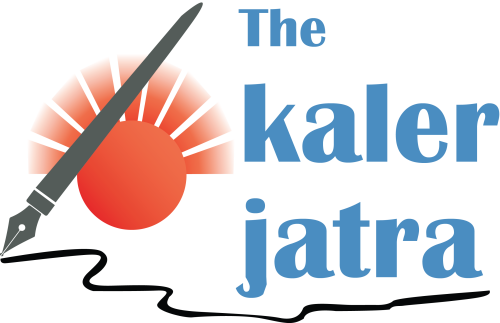We may think of 2020 as a year of seemingly endless bad news as the pandemic threatened our health, forced us to stay at home and upended most facets of life. But it wasn’t all bad.
Here are some of the things that managed to come out on top.
Rescue Animals
In a pandemic, a young man’s — and pretty much everyone else’s — fancy lightly turns to thoughts of … pets. Or so it seemed this year, anyway, as the hottest commodity during lockdown after toilet paper and sourdough starters turned out to be rescue puppies and other critters.
Stuck in our homes, starved of emotional interaction, suddenly we viewed those formerly unwanted animals in a new light. Their needs gave a structure to formless days; their affection was an antidote to the loneliness of social distancing; their energy was an excuse to get out of the house.
The race to adopt was on as of April, when Wired reported, “All over the country, from New York to Wisconsin and North Carolina to Colorado and New Mexico, animal shelters are reporting massive upswings in the numbers of animals they’ve been able to adopt out or place in foster homes.”
By August, some organisations had waiting lists. When holiday season rolled around, gift givers had to start thinking hamsters. Now we’re all barking up the same tree.
— VANESSA FRIEDMAN
Guns
In the first six months of 2020, according to the National Vital Statistics System at the Centres for Disease Control and Prevention, 1,778,000 babies were born in the United States, while 1,626,000 people died. During the same period, Americans purchased approximately 19 million firearms. According to estimates by the Brookings Institution, based on background check data provided by the FBI, 3.9 million guns were bought in June alone, the highest single-month sales on record.
The June surge in gun purchases corresponded with a national protest movement against racism, as well as episodes of street violence and property destruction — a response that, if not exactly heartening, was predictable and with precedent.
More novel, though, was the surge that came just three months before, in March, when President Donald Trump declared the pandemic was a national emergency and cities and states across the country locked down.
Millions of Americans responded to the shock and uncertainty of a new, deadly and poorly understood disease by stocking up on food, toilet paper, cleaning supplies and communications equipment. Millions more, additionally or perhaps just instead, drove to the store and left with a new gun.
— JOHN HERMANN
Edibles
A steady stream of anxiety-inducing events that could make anyone wish for an escape hatch called for one thing: marijuana. By late spring, cannabis stores and medical marijuana dispensaries were deemed essential businesses in more than a dozen states. Weed won at the polls too. Arizona, Montana, New Jersey and South Dakota legalised recreational marijuana, and Mississippi and South Dakota made medical marijuana legal.
Edibles became a popular choice for a pandemic. Sales were up with cannabis edibles even before the coronavirus swept the United States, as people drifted away from smoking and vaping to protect their lungs from the respiratory virus. With so many stuck inside with a bit of extra time on their hands, it’s no surprise what they ended up reaching for. Whatever works.
An illustrative photo of an American flag created with cannabis edibles, one of the things that came out on top in the tough, pandemic-plagued year of 2020, in San Francisco, Nov 10, 2020. A steady stream of anxiety-inducing events that could make anyone wish for an escape hatch called for one thing: Marijuana. By late spring of 2020, cannabis stores and medical marijuana dispensaries were deemed essential businesses in more than a dozen states. Kelsey McClellan/The New York TimesAn illustrative photo of an American flag created with cannabis edibles, one of the things that came out on top in the tough, pandemic-plagued year of 2020, in San Francisco, Nov 10, 2020. A steady stream of anxiety-inducing events that could make anyone wish for an escape hatch called for one thing: Marijuana. By late spring of 2020, cannabis stores and medical marijuana dispensaries were deemed essential businesses in more than a dozen states. Kelsey McClellan/The New York Times— LINDSEY UNDERWOOD
Streamers
There was perhaps no group of creators more prepared for the horrors of 2020 than streamers. Sitting in front of their cameras, often alone, talking for hours to the camera is what they do, and many are excellent at it. As those in traditional media struggled to entertain audiences on platforms like Instagram Live and Twitch, streamers were perfectly positioned to capture the moment.
They hosted gaming tournaments, debates and news coverage. They provided millions of bored Americans with educational content, streaming themselves cooking, baking bread and crafting. They hosted politicians including Reps. Alexandria Ocasio-Cortez, D-NY, and Ilhan Omar, D-Minn, who used the streamers to help encourage young people to vote.
All of this contributed to a livestreaming boom in 2020. Twitch hit a high in terms of monthly hours watched, with 1.7 billion hours watched in November alone, according to a report from StreamElements, a livestreaming tools and services provider, and arsenal.gg, an analytics firm. Chatting channels, where streamers talk with their audience, became the most popular category as quarantine took hold and people grasped for social connection.
Streamers also captured the political moment. The 29-year-old progressive political commentator Hasan Piker rose to the top of Twitch in November after more than 80 hours of live election coverage. As the Black Lives Matter movement spread this summer, “Twitch became a hub for airing the sit-ins and marches over racial inequality,” The New York Times reported.
Outside of Twitch, popular influencers who had only dipped their toes into streaming began broadcasting hours of their lives, streaming themselves even as they slept.
— TAYLOR LORENZ
Screen Time
Before this year, screen time was a hotly contested parenting topic. On one end of the spectrum was the zero-tolerance crowd, who were certain that touch screens would short-circuit a toddler’s neurons and destroy a teenager’s life. On the other, were the all-screens crowd, who wanted to teach their children coding as a second language.
In 2020, even the most organic Montessori toy mom had to hand over the iPad for at least a little while each day to preserve her fraying sanity. Who knows if it will stick, but screens are here to stay for everyone until at least the end of 2021.
— JESSICA GROSE
Messy People
I have a theory about living arrangements: The most important compatibility test is each person’s tolerance to messiness. And as we all know, a mismatched Messiness Quotient among roommates can make things … messy.
So as lockdowns this year forced millions of Americans indoors and turned living spaces into working spaces (and gyms, schools, bars), our collective MQs were pushed to the limit. Who can be bothered to pick up an empty water bottle or take those empty Amazon boxes to the recycling bin when the world is falling apart?
If you, like me, are a messy person whose MQ matches that of the people you live with, well, this is our moment. No longer must we hide in the shadowy dirty clothes piles and overflowing junk drawers of society. Tidying up for guests? Hosting guests is cancelled! Need to clear the table for dinner? Nope, that’s a workstation now, we’re eating on the bed again. And as I wrote this, from my standing desk at home, I paused to search for my yoga mat. Unable to find it, I asked my roommate to help. No luck.
“It’s not, like, a small thing. How could we lose it?” I asked her. She smirked and said, “Come on.”
Even The New Yorker, that most august and pristine of publications, acknowledged this lifestyle on a recent cover. It featured an illustration of a woman sitting at her home desk, fully put together — from the waist up, just enough to look good for a Zoom happy hour. Outside of the view of her laptop’s camera was a house in disarray.
— TIM HERRERA
Therapy
When television writer Cord Jefferson accepted an Emmy for “The Watchmen” this year, he thanked his parents, his fellow writers and the show’s director. He also thanked his therapist, Ian, who, he said, had “changed my life in many ways.”
Self-care may be the mental health tonic of the moment, but there’s nothing like good old-fashioned talk therapy after nine long, deadly months of a pandemic. These days, you’re only human if you’re falling apart. (No, really: According to a new Gallup survey, Americans’ assessment of our mental health is “worse than it has been at any point in the last two decades.”) In the absence of national leadership, at least we’ve got our therapists.
Of course, any “winner” of 2020 is probably also kind of a loser, or at least that’s what my new therapist tells me. Therapy wins in that we could all use someone to talk to, and now we can do it from our couches. It wins in that there are startups working to close gaps in the system, and because some geographic regulations have been waived, meaning patients now have access to treatment in communities other than their own. (Mine, whom I will probably never meet in person, lives in Northampton, Massachusetts.)
And yet, therapists are drained, Zoom is exhausting, and there will always be more need than supply. As Jefferson put it in his speech, “Therapy should be free in this country.” Indeed.
— JESSICA BENNETT
Rotten Bananas
Toilet paper has always been popular, even if we never quite acknowledged it. Hand sanitiser may be in the news more than ever (was it ever in the news before?), but ask any mother with a small bottle attached to her keychain or a teacher writing a school-supply list: Well before 2020, it was a staple.
But rotten bananas?
Rotten bananas have had a pandemic-fuelled, geek-to-chic glow-up.
Before this year, rotten bananas were a reminder of our waste, our excess, our inability to forsake the egg and cheese on a roll in favour of making a healthy smoothie for breakfast like we promised ourselves we would do when we bought groceries.
As we rushed from home to work or social gatherings, we never made the smoothie, we always got the roll, and our bananas idled, getting mushy and bruised.
Then came 2020: a monthslong opportunity to re-examine all that we once wrote off as without value, and to bake banana bread, relying on some very basic ingredients and our smooshy, brown, fruit-fly-attracting treasured rotten bananas.





















